

On the tenth day of my vacation, I would be driving south and visiting the state of New Mexico for the first time. This would be the first of three days spent in New Mexico, with the goal of stopping to see some of the oldest cultural attractions in the state at Taos and Santa Fe. Unlike many of the other states that I was visiting on this trip, New Mexico does have somewhat of a tourist industry, and both Taos and Santa Fe are tourist attractions that have very long histories dating back several centuries. Taos Pueblo is a Native American community that predates the arrival of Columbus, while Santa Fe is one of the oldest cities in the United States. They both serve as a reminder that other groups - first the indigenous peoples of the Americas and then the Spanish - predated the arrival of the English in the New World. I had been looking forward to experiencing the unique cultural fusion of these groups created in the American Southwest, as well as seeing another new state that I had never visited before. I had to read a fair bit about the Spanish colonial period while I was working on my history Ph.D, and this was my first chance to see some of these places for myself.

After a short drive the previous day in Colorado, I was back to a longer route again for this day's planned path. I was leaving from Colorado Springs and heading to Santa Fe, with a stop in Taos along the way since it was en route. The total distance was just under 300 miles (about 465 kilometers), but Taos is located a bit out of the way and required me to take some back routes instead of the standard interstates. This meant that I was looking at somewhere around five hours of driving time in total. I woke up early on this Sunday morning around 5:30 AM, knowing that lots of attractions would close early in the afternoon and that I needed to be off and driving before the sun was up. The drive south on Interstate 25 didn't have anything of note, at least not until I reached Walsenburg and started heading west along some of the local state roads. As I passed through rural southern Colorado, it quickly became clear that I was in the middle of nowhere:

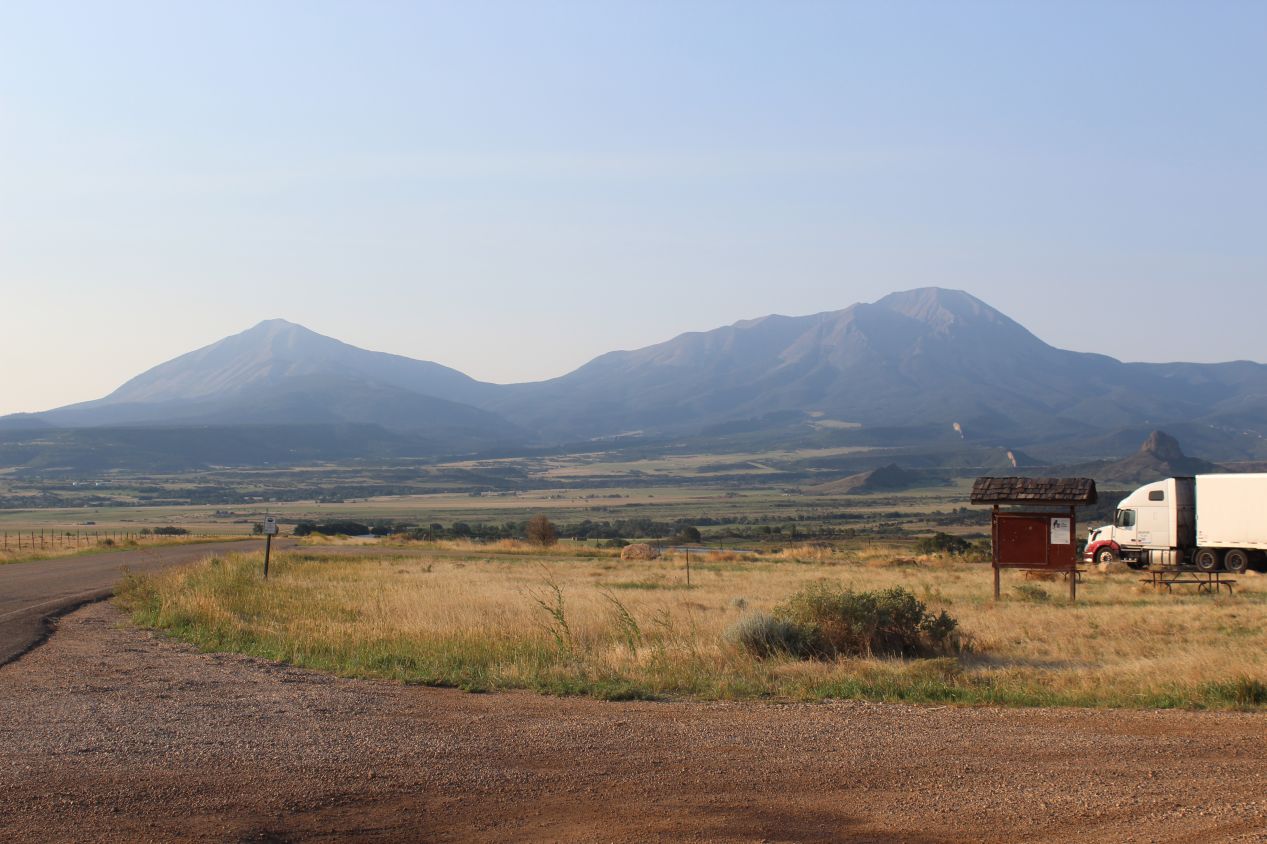


There were only a few small towns along the road and otherwise I drove through wilderness for several hours. The environment here seemed to be a dry prairie of sorts, on the western edge of the Great Plains in a situation somewhat similar to what I had seen in western Nebraska, albeit hotter and drier. There were definitely mountains off in the distance though, with their upper slopes empty of vegetation at the higher altitudes. It was pretty enough in a rugged fashion, and the morning sunshine helped to soften the landscape. As I continued onwards and crossed the border into New Mexico, the environment outside slowly become more arid. I saw fewer trees and more in the way of tough scrub bushes. This definitely wasn't a desert region but it clearly didn't get a lot of rainfall either.

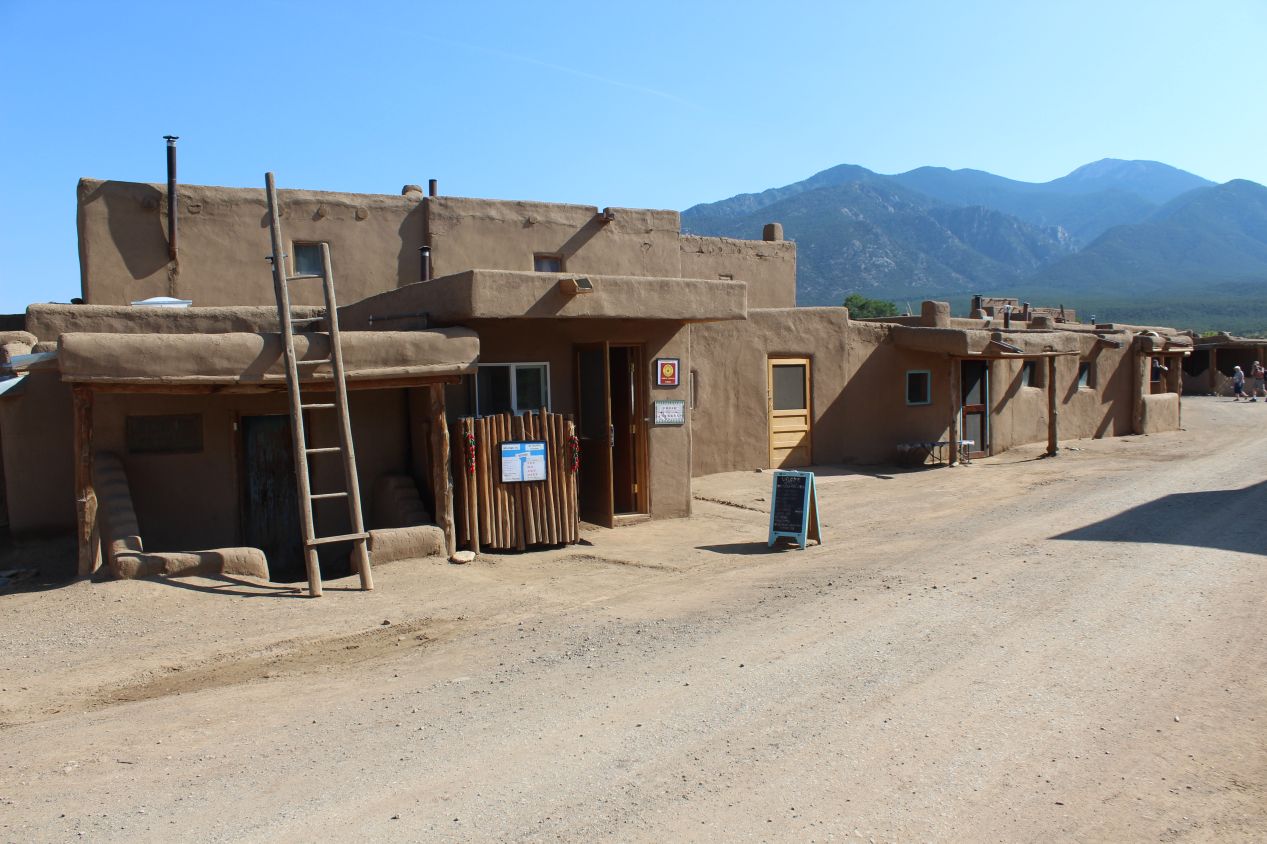


I reached Taos Pueblo at about 9:00 AM and fortunately it was already open for the day to visitors. Taos Pueblo has been designated as a UNESCO World Heritage Site due to its historic status as one of the longest continuously inhabited communities in the United States. It may very well be the oldest; the exact point in time when it was first built is not exactly clear, but Taos Pueblo was likely first occupied by the local Pueblo people sometime between 1000 and 1450. The current structures in Taos Pueblo haven't been around for that whole period, of course, and have been repeatedly rebuilt over time as the elements wore away at them. These pictures were taken from the initial street that enters into Taos Pueblo, which includes the small community church of St. Jerome. That church was open to the public but there was a request not to take photos inside and I thought that it was important to respect their wishes.




Taos Pueblo is divided in half by a small river known as the Rio Pueblo de Taos, with buildings located on either side. The most famous building complex is situated on the northern side of the river and is called the Hlauuma (North House). This multi-storied residential complex of reddish-brown adobe is the reason why Taos Pueblo became a tourist attraction, and it's one of the most photographed attractions in the state of New Mexico. The adobe material used to construct the Hlauuma comes from a mixture of earth and straw, with the local soil of the American Southwest providing the signature reddish-brown coloring. Interestingly, the vertically stacked structure was created for defensive purposes; prior to the 20th century, there were no windows or doors on the lower floors, and access to the building only came via holes in the roof. In other words, this was essentially a Native American version of a fortified castle intended for protection. That's no longer the case today, of course, but the Hlauuma is still inhabited by members of the local Taos Pueblo people. These are actual homes and I tried to be respectful while I was visiting.

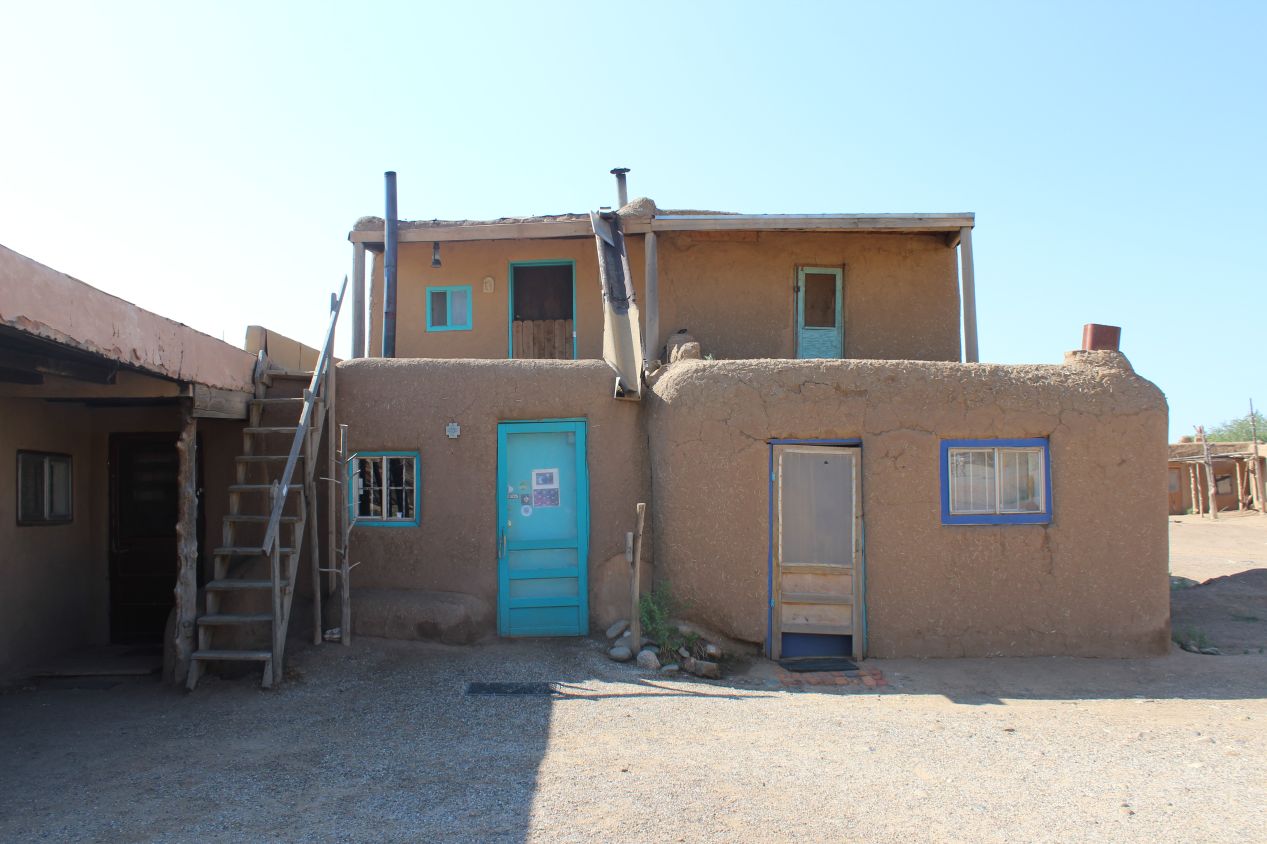


The south side of the river lacked a single large structure and instead had more in the way of individual houses. These homes were mostly small and reflected the generally impoverished nature of the region. This is an area that relies on tourism to support itself, and I was happy that I was able to provide some help in that regard. The Taos Pueblo people had a number of small stores in some of the buildings where they were selling handcrafted materials; I purchased an arrow from one of them so that I could boast of owning a real arrow from a Native American fletcher. There was also the official store located on the southern side of the river in the Hlaukwima (South House), where the last two pictures above were taken. The artwork on display here was beautiful, with the distinctive designs of the American Southwest, and I also purchased a handcrafted bowl similar to the ones on the shelf above. With the ability to purchase directly from the crafters without going through any middlemen, the prices for these items were relatively inexpensive as well.


Here's a few more wide angle views of Taos Pueblo. Before moving on, I should also mention that the friendly welcome that tourists receive today at Taos Pueblo has not always been the case. The local people were proud of their own independence and put up a fierce resistance against any outside attempts at domination. Back in 1660, the Native Americans of Taos Pueblo killed the resident Spanish priest and destroyed the church; after it was rebuilt, they rose up again in 1680 as part of the general Pueblo Revolt and again destroyed the church, killing two more Spanish missionaries in the process. At the conclusion of the Mexican-American War in 1847, the Taos Pueblo people revolted against the incoming American authorities by killing Governor Charles Bent and marching on Santa Fe. American soldiers eventually subdued the rebellion by attacking Taos Pueblo and executing the rebel leaders, bombarding and destroying yet another local church in the process. For what looks like a tame little village, Taos Pueblo has had an eventful history.

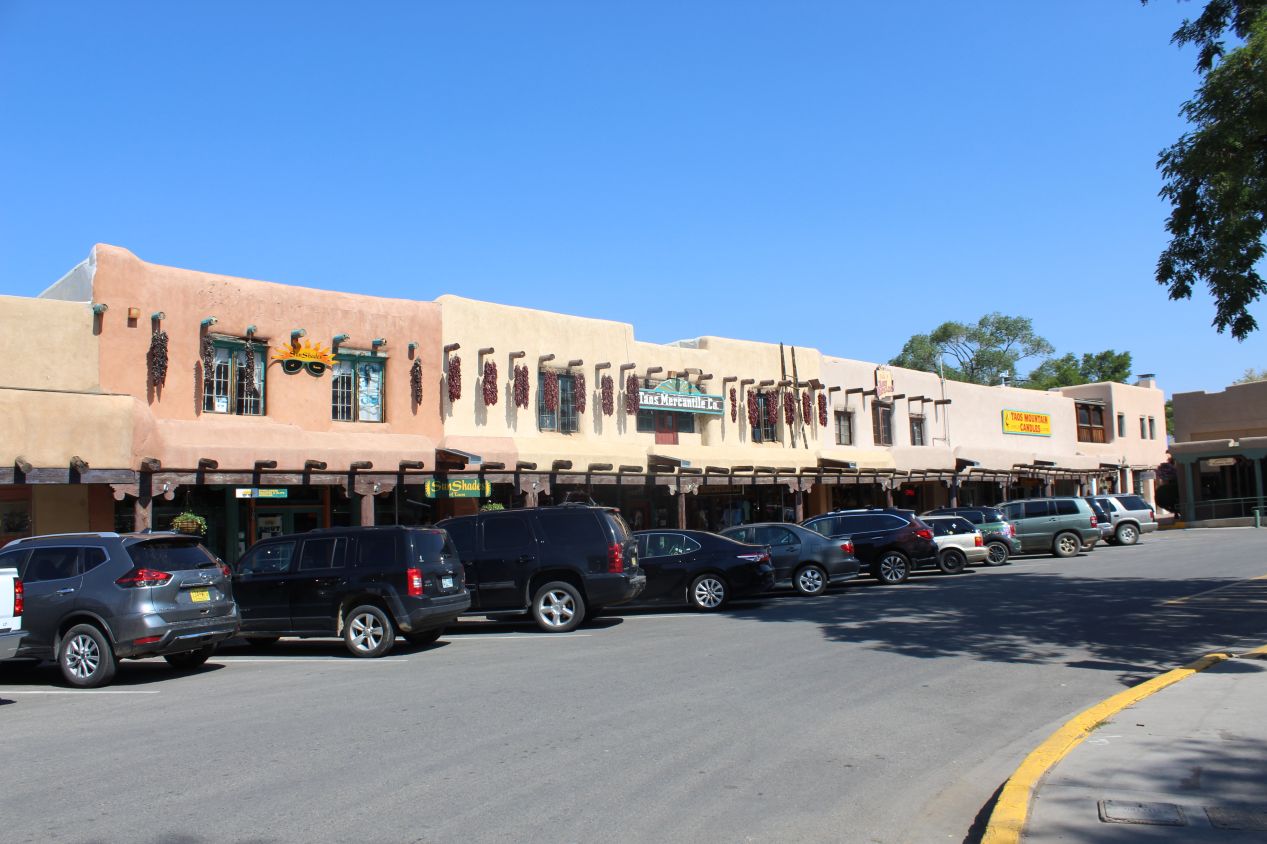


Taos Pueblo is tiny in population, with only about 150 people currently living in the historic structures. About a mile away to the south is the modern town of Taos, which is significantly larger than Taos Pueblo but still small with a little under 6000 residents. Taos was founded in the late 18th century as a Spanish colonial town, and the historic central plaza still bears the traces of the early colonial period in its design. Due to the nearby scenic presence of Taos Pueblo, an artistic community developed in the town of Taos in the early 20th century and has remained down to the present day. Modern Taos is a small town full of art studios and handcrafted boutique shops. The downtown is easily walkable and this place is a shopper's paradise; my fiance Liz would have had a blast exploring this place.

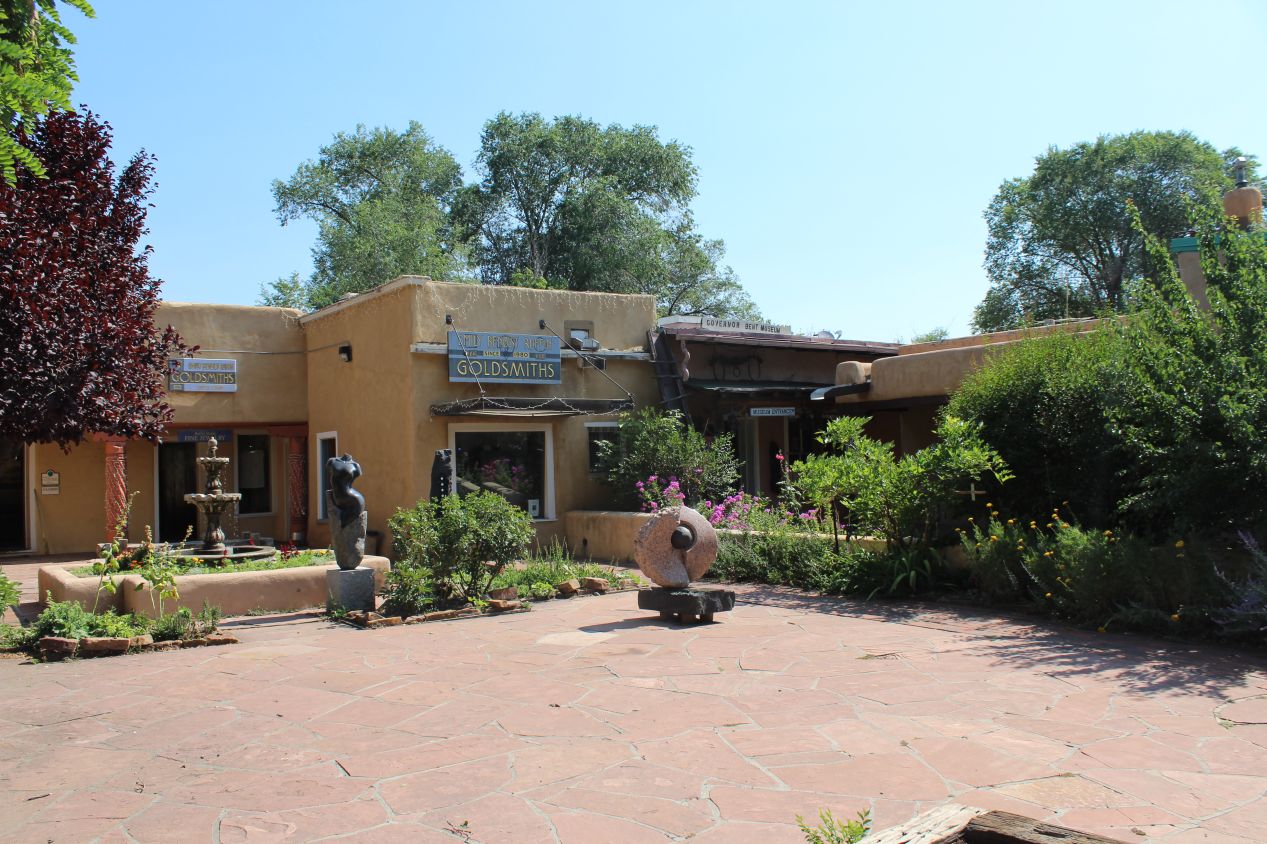


In addition to the boutique stores, Taos also contains a historic religious building known as San Francisco de Asis Mission Church. Built between 1772 and 1816, it's one of the best surviving examples of a Spanish colonial mission church in New Mexico. Like the structures in Taos Pueblo, the San Francisco de Asis church was constructed out of the same adobe brick material. This has been another popular subject for the artists in Taos to portray, and the church was depicted by Georgia O'Keeffe in her paintings and by Ansel Adams in his photographs. When I arrived, I found the parking lot completely packed with cars, to the point that it was difficult to get in or out of the place. This was due to the fact that it was a Sunday morning and there were services taking place inside. As a result, I was able to photograph the building exterior but couldn't do more than peek inside the entrance. I wasn't going to be obnoxious enough to try photographing the interior while a mass was being said.


After leaving Taos behind, I had a drive of about an hour and a half before reaching Santa Fe. The drive south into New Mexico took me further into the arid environment of the state, and it was now apparent that I had reached a different climate zone than the one that I left behind in Colorado. Trees all but disappeared entirely and the only vegetation came in the form of tough scrub grasses. When the road passed by a river, the resulting explosion of green along its banks came as a surprise after all of that dry brown coloring elsewhere. By the way, the river in those pictures above is the Rio Grande, flowing here in its upper stretches as little more than a stream. The Rio Grande runs through Albuquerque down to El Paso and then forms the remainder of the border between the United States and Texas as it flows to the east. It's a handy reminder of how that border only exists in political terms, and this whole region still remains tied together by the shared history of the Spanish colonial past.

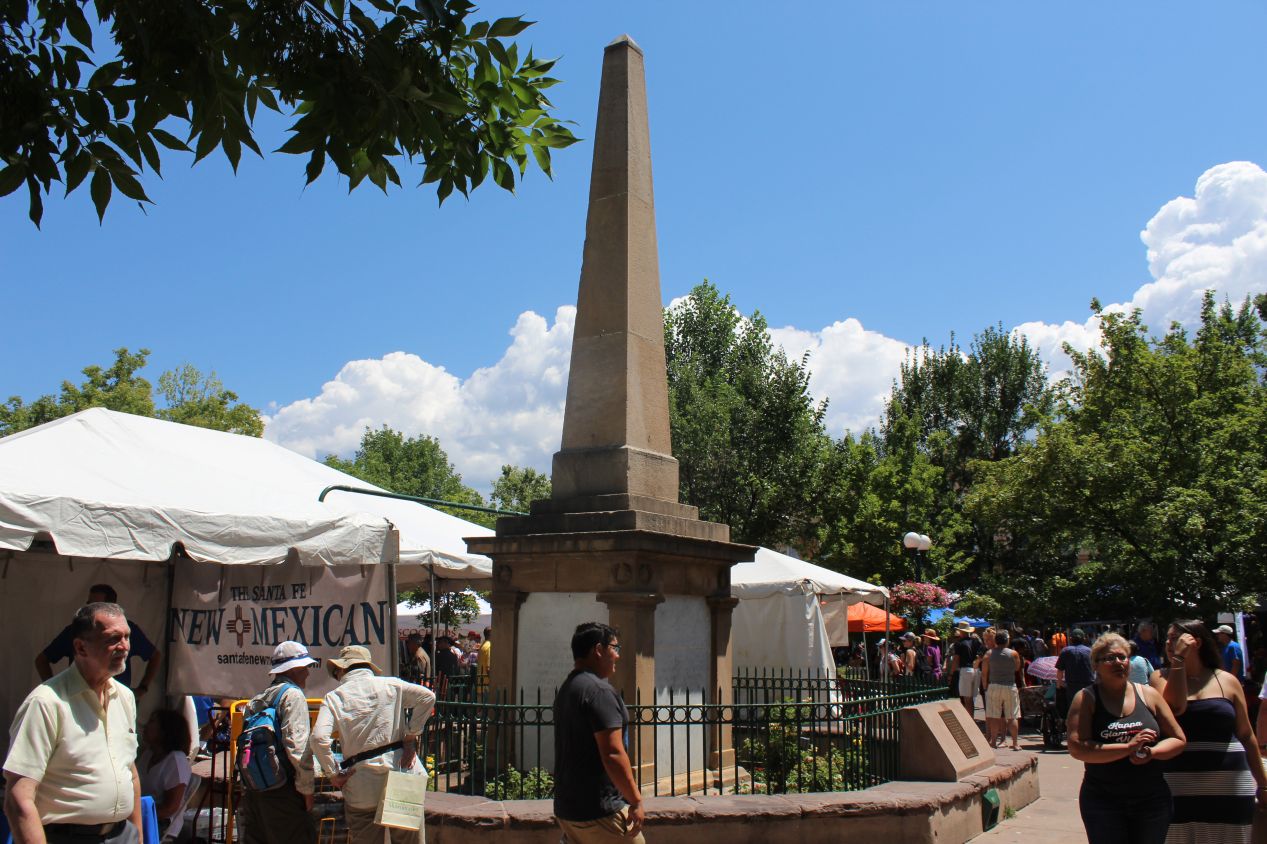


I reached my destination at Santa Fe in the early afternoon. After parking the car, I headed off to explore the historic downtown area of the city. Santa Fe was founded by the Spanish in 1610, and it is the oldest state capital in the United States. Santa Fe is not the largest city in New Mexico, or even the second largest, and it's actually fairly small as cities go with a population of roughly 70,000 people. This is a city famous for its political and cultural significance, not so much for overall economic activity. I started out by heading for Santa Fe Plaza, the heart of the city as per the standard Spanish colonial design. This open area has been a gathering place for the people of Santa Fe since the early 17th century and it continues to serve as such to this day. It turned out that I was visiting on the afternoon of a major public festival known as the Spanish Market, and there were people everywhere throughout Santa Fe Plaza. While it was nice to have such a lively event taking place, I would have preferred that things were a little bit less busy. It was hard to take photographs or get a great sense for the area when there were so many people wandering through the plaza.




My top attraction to see in Santa Fe was located right on the plaza in the center of the city. This was the building known as the Palace of the Governors, the adobe structure pictured above with the red cross on yellow background flag used in colonial New Spain. The Palace of the Governors was first constructed when Santa Fe was founded in 1610 as the provincial capital of Spanish New Mexico. It was the seat of the Spanish governor for the next two centuries, albeit with dramatic interruptions from time to time as the political control over New Mexico changed hands. The Palace of the Governors was occupied by the Pueblo people during the Pueblo Revolt from 1680 to 1692 when they temporarily drove the Spanish out of the region, then it was taken over the Mexican government following the establishment of Mexican independence in 1821, and then finally the United States after the Mexican-American War in 1848. Santa Fe was even briefly occupied by a Confederate army for less than a week in 1862 before being driven off by Union forces. Long story short, Santa Fe has been the seat of government for this region for the last four centuries, and the Palace of the Governors has been the historic home to those governments.

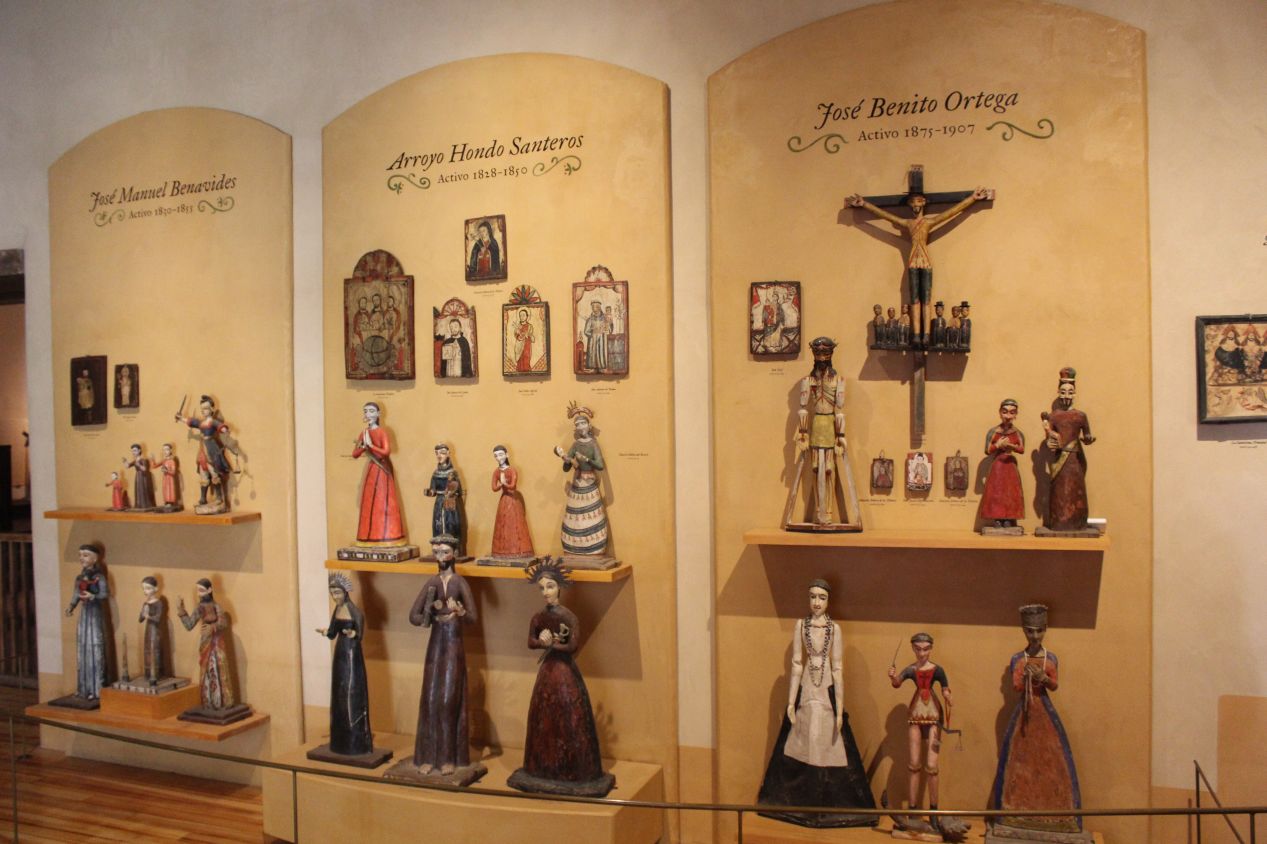


The current structure at the Palace of the Governors hasn't been around since 1610 of course. I included a picture of that trapdoor above since it shows a view looking down through the current building (which mostly dates from the late 19th and early 20th centuries) at the stone foundations of the original governor's residence. Today the Palace of the Governors is a museum that takes visitors through the long and turbulent history of Santa Fe, showcasing some of the restored rooms where Spanish, Mexican, and American territorial governors worked to oversee the region. There was also a small chapel on display that demonstrated the influence of the Spanish colonial version of Catholicism on the building's design. For example, I noted the many depictions of saints which are commonplace in that tradition. I also saw repeated bloody depictions of the crucifixion on the walls, to a somewhat disturbing degree, which is something that I recall reading about when I studied this period in graduate school. From what I remember, bloody displays of the crucifixion happened to be a good cultural match with certain self-flagellation practices carried out by the local Pueblo peoples, and the connection was used by Spanish colonial missionaries to help convert them to Christianity. These depictions are uncomfortable for a modern viewer but represented an attempt by missionaries to reach out and establish a shared connection with the peoples that they were trying to convert. Leaving aside the cultural imperialism angle, it's a good example of how different cultures interact and influence one another in unique ways.

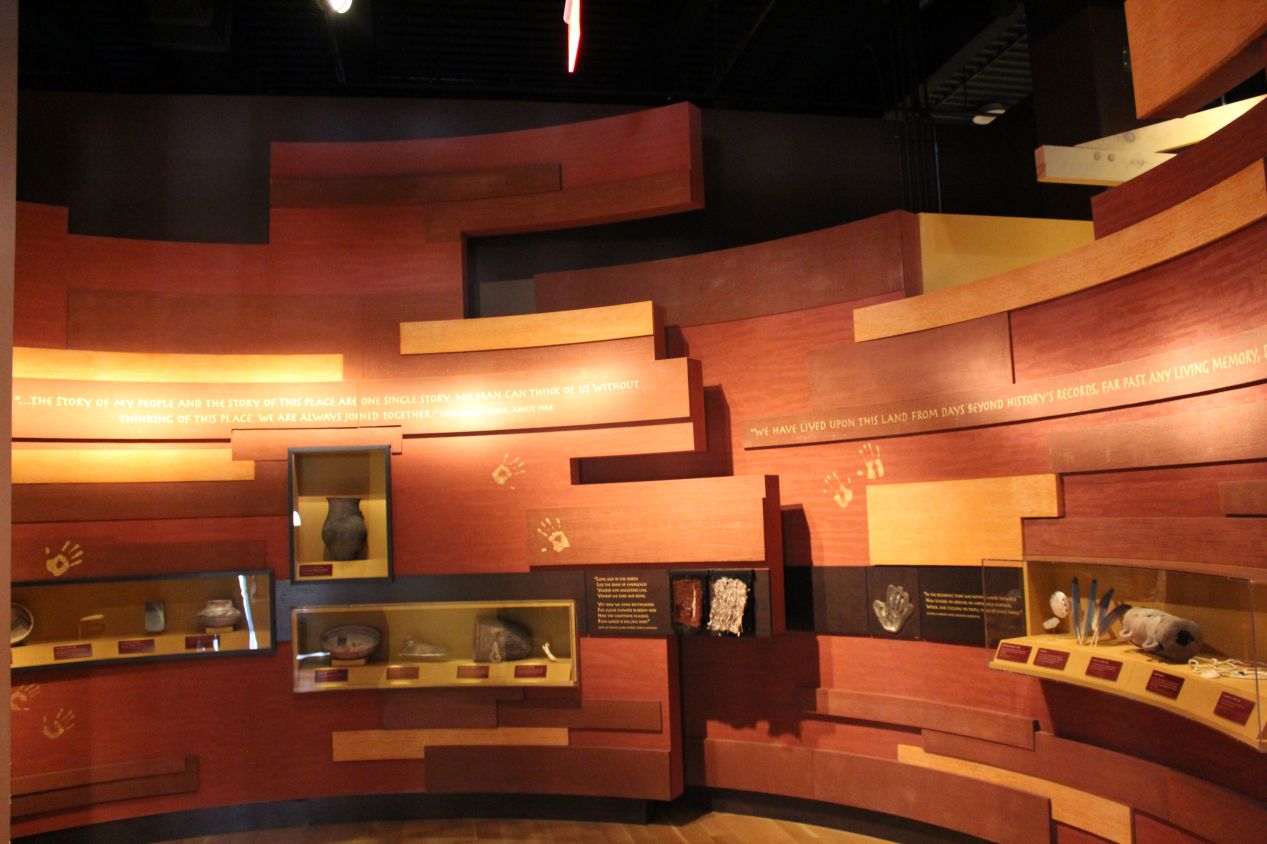


The Palace of the Governors is split across two different buildings, the older one located on the plaza dating back to colonial times and a modern addition situated behind it acting more like a typical museum. There's an attractive small courtyard separating the two buildings, with the newer addition in the back constructed out of "faux-dobe" (fake adobe made from concrete blocks) to resemble the more authentic original building. The main attraction in the museum portion of the Palace of the Governors is an extended exhibit tracing the history of the state of New Mexico. It's very well done and spends a considerable amount of time covering the Native Americans who lived in this area for thousands of years, and the effect that the arrival of the Spanish had on their society. I particularly liked the hail of arrows (looking just the one I purchased earlier in the day) symbolizing the Pueblo Revolt, which was successful enough to remove the Spanish colonial presence entirely for more than a decade. There are few other similar events in colonial history and it's something that's begging for a modern treatment in film. Then the exhibit walks through the remaining Spanish and Mexican period of New Mexico's history, when this was a remote backwater province that attracted little attention. Prior to the development of the railroad, New Mexico was highly inaccessible and few people came to the region.




The later parts of this exhibit then continued the story with the American portion of New Mexico's history, starting with a long period of administration as a territory from 1848 to 1912. The museum had an original copy of the New Mexico state constitution and the pen that President Taft used to sign the law establishing New Mexico's statehood. I particularly liked the 47 star flag on display, an extreme rarity that was never officially used by the United States. For those unfamiliar with this obscure bit of trivia, New Mexico became the 47th state in January 1912 with Arizona following it as the 48th state in February 1912. As a result, the USA essentially went from 46 states to 48 states and didn't bother to create a flag with 47 stars. This was an unofficial flag created in New Mexico because the locals were too excited to wait on Arizona to join the union. At the end of the exhibit was a discussion of the different attractions and economic activities taking place across the modern state, a subtle advertisement for New Mexico tourism. The gift store in the museum had more impressive artwork from local artisans on display; everything was a lot more expensive than it had been at Taos Pueblo, however.

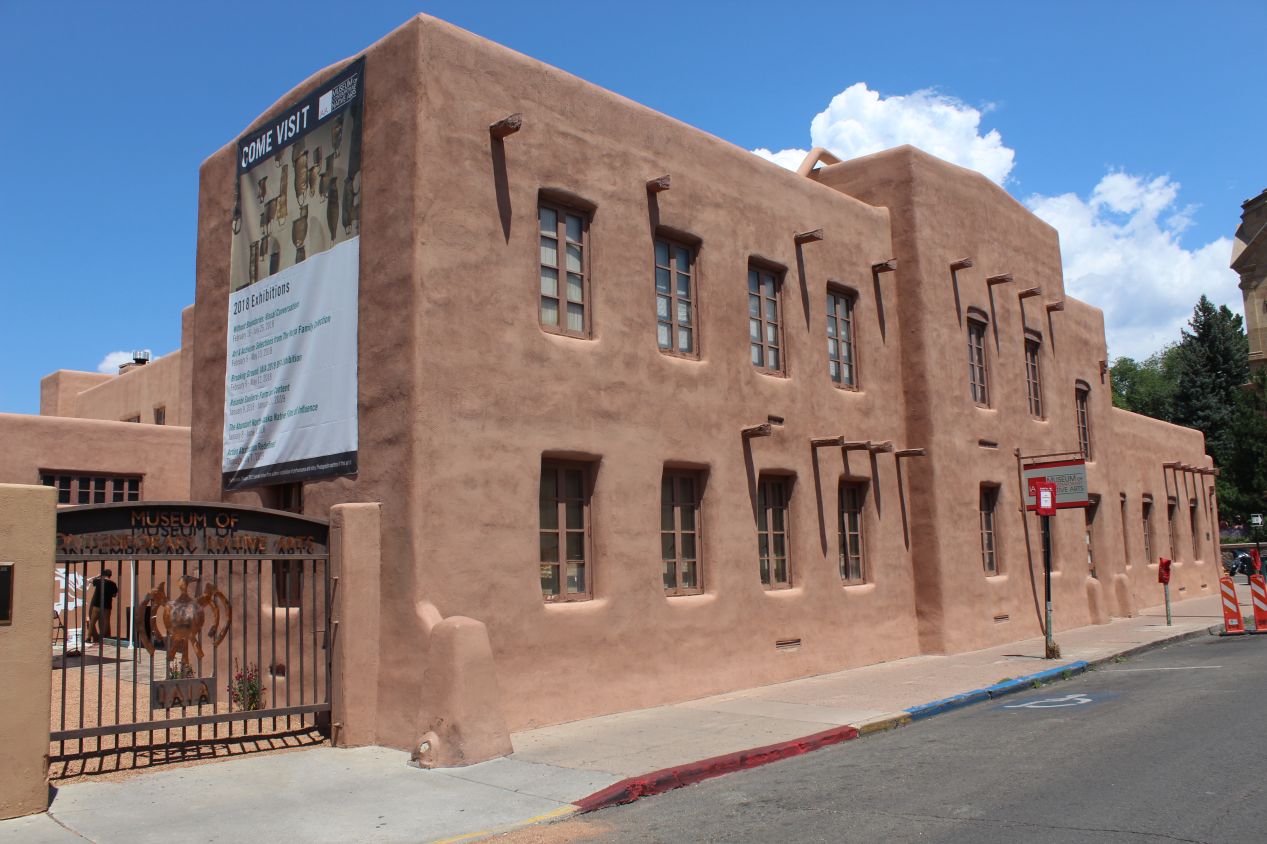


After finishing up at the Palace of the Governors, I walked through the crowded streets of Santa Fe acrossto the east side of the plaza. There were two different attractions on this side, neither of which I had the time to explore more fully. The first of these was the Museum of Contemporary Native Arts, an art museum situated in the old Santa Fe post office. As the name suggests, this institution focuses on displaying artwork from different Native American groups, and especially those from the American Southwest. Just across the street was the largest church in Santa Fe, which has the tongue-tying name of the Cathedral Basilica of St. Francis of Assisi. This cathedral was built in the 1870s and 1880s on the site of an older adobe church from 1715, which itself had replaced a still older church from 1626 destroyed during the Pueblo Revolt. St. Francis was designed in the Romanesque Revival style, creating an unusual combination of the Romanesque form mixed together with the building materials and cultural influences of the American Southwest. Unfortunately it was closed off to the public for a private concern (with this again being a Sunday afternoon), so I'll have to link to a stock image of the interior here.


While we're on the subject of churches, there was another notable one about a block away to the south known as the Loretto Chapel. This was another building constructed in the late 19th century and therefore not sharing the same historic background as many of the older structures in Santa Fe, with the Loretto Chapel comissioned for a local girls' school named the Loretto Academy. The chapel is the Gothic design on the left; the adobe-styled building on the right is the tourist information center and gift store. The Loretto Chapel became famous locally for its unusual helix-shaped spiral staircase known as the "Miraculous Stairway":

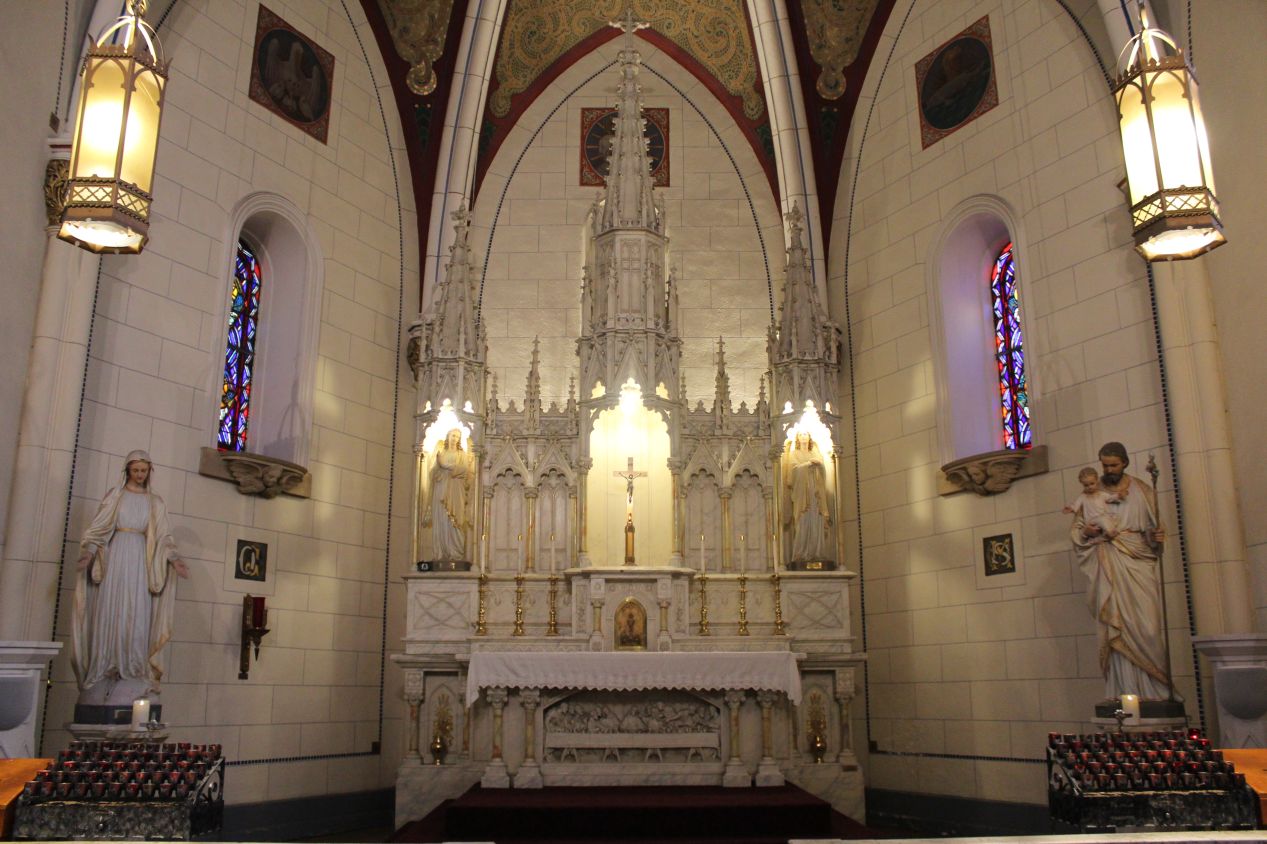


According to the legend, this spiraling staircase holds itself up to its full height of 20 feet (6 meters) without the support of a central pillar, thus the "miracle" of its design. The staircase is built mostly out of wood and is held together by wooden pegs and glue rather than nails or other hardware. There's no miracle taking place here of course, as the staircase is held up by inner supports as well as an iron bracket attached to a column, but it does have an attractive curving design. (Visitors are not allowed to walk up the stairs, which are purely decorative at this point.) The rest of the chapel has a standard Gothic design, with stained glass windows set high in the walls and an arched overhead ceiling. I felt as though I was getting another lesson in religious architecture here, with churches influenced by the Pueblo natives, Spanish colonialism, and then Romanesque and Gothic revival setups designed to hearken back to medieval Europe. What a mixed group.

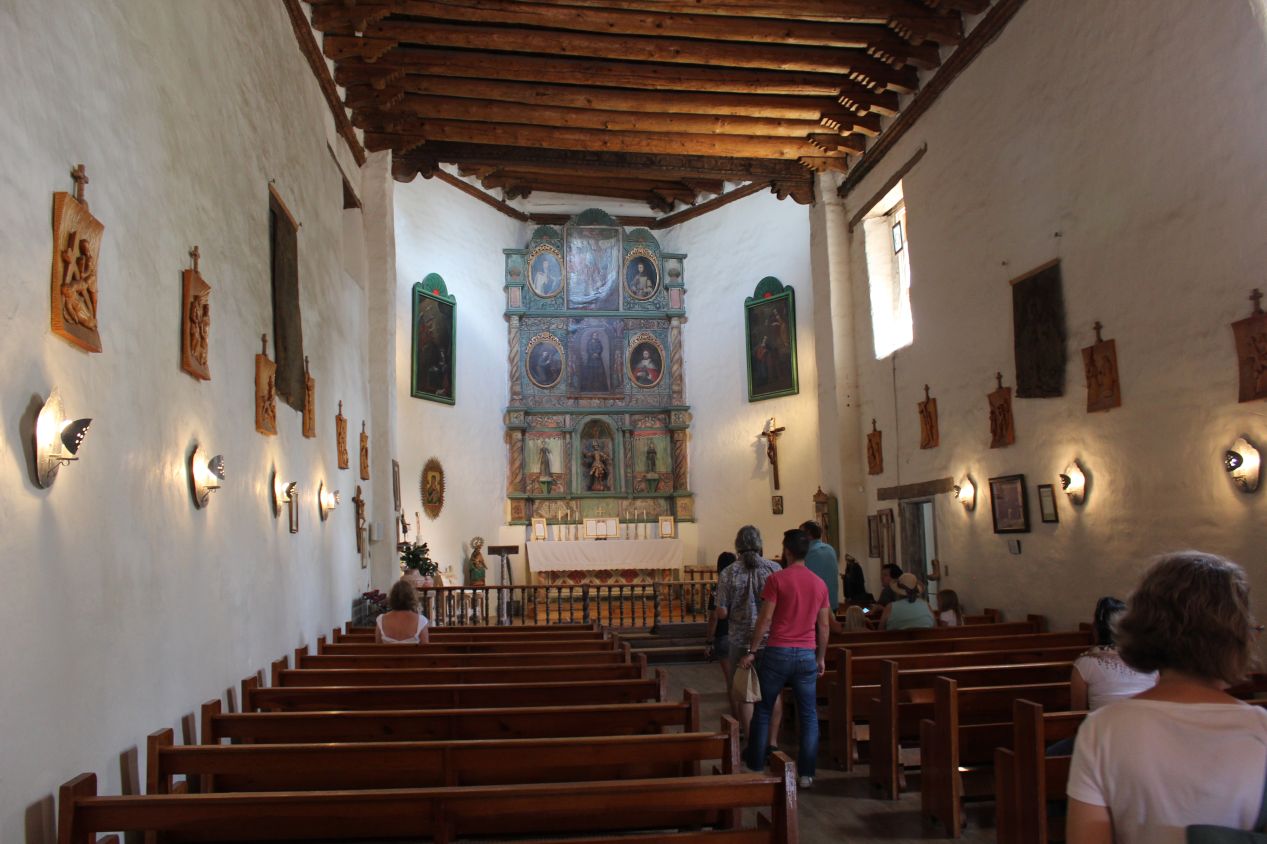


And there was one more church left to go before I finished up in Santa Fe. This was the church known as San Miguel Mission, a humble adobe structure built by the Spanish in the early colonial period. San Miguel Mission was built at some point between 1610 and 1626, and it is the oldest surviving church in the continental United States. It was damaged in the Pueblo Revolt but was one of the few buildings to survive, and despite being repaired many times over the last four centuries, the original walls remain essentially intact. As befitting a very old building, the interior of San Miguel Mission was small and somewhat claustrophobic. There were only four windows to let in light from the outside, and before the addition of electricity it would have been very dark inside. Here in the summertime, it was also distinctly hot and stuffy inside the church; there was an electric fan set up to circluate some air but it only helped so much. San Miguel Mission was very much still in active use, and I ended up waiting outside for about 20 minutes until the afternoon service taking place came to an end. This was one of those places where I could feel the age of the surrounding structure, the weight of the tens of thousands of services conducted inside over many, many decades.


Right next to San Miguel Mission was this little adobe structure, which claims to contain the oldest house in the United States. It's unclear whether or not that's actually true; the information online about this place claims that it's "one of" the oldest houses in the country, which is likely more accurate. It had free entry for visitors and most of the space inside was taken up with a gift store in the non-historic part of the current building so this was a bit of a tourist trap. Still, for anyone visiting San Miguel Mission you may as well walk across the street and spend five minutes poking around inside for the novelty of the place.

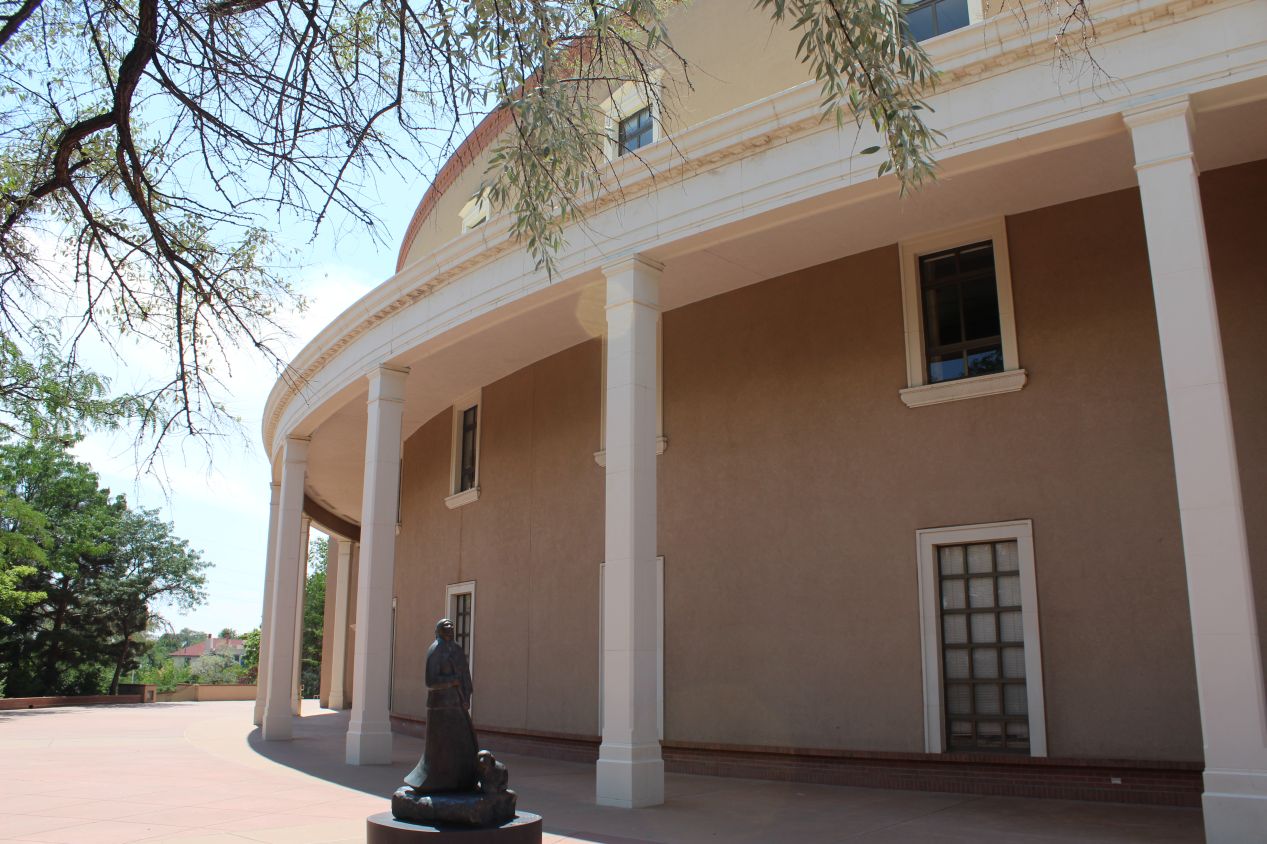


Santa Fe remains the capital city for the state of New Mexico, and as a result it also holds the New Mexico State Capitol building. This state is akin to Nebraska in going its own separate way in terms of the state capitol design; New Mexico is the only state to have a round building for its capitol, and this place is known informally as "The Roundhouse" as a result. The building was designed to resemble the Zia Sun Symbol (the one depicted on the New Mexico flag) when viewed from above, and the capitol was conceptualized as a fusion of Spanish colonial architecture together with more classical influences. This was one of the state capitols that I most wanted to see, but I knew long before I arrived that it would be closed for the weekend and I would only have a chance to view the exterior. That's a shame too because the central atrium inside looks really awesome in stock photos. I walked a full circuit around the deserted building and discovered that it was quite small in practice. The New Mexico State Capitol dates back only to 1966, and in an interesting quirk, Santa Fe houses both the third-newest state capitol building along with the oldest state capitol building in the form of the Palace of the Governors.

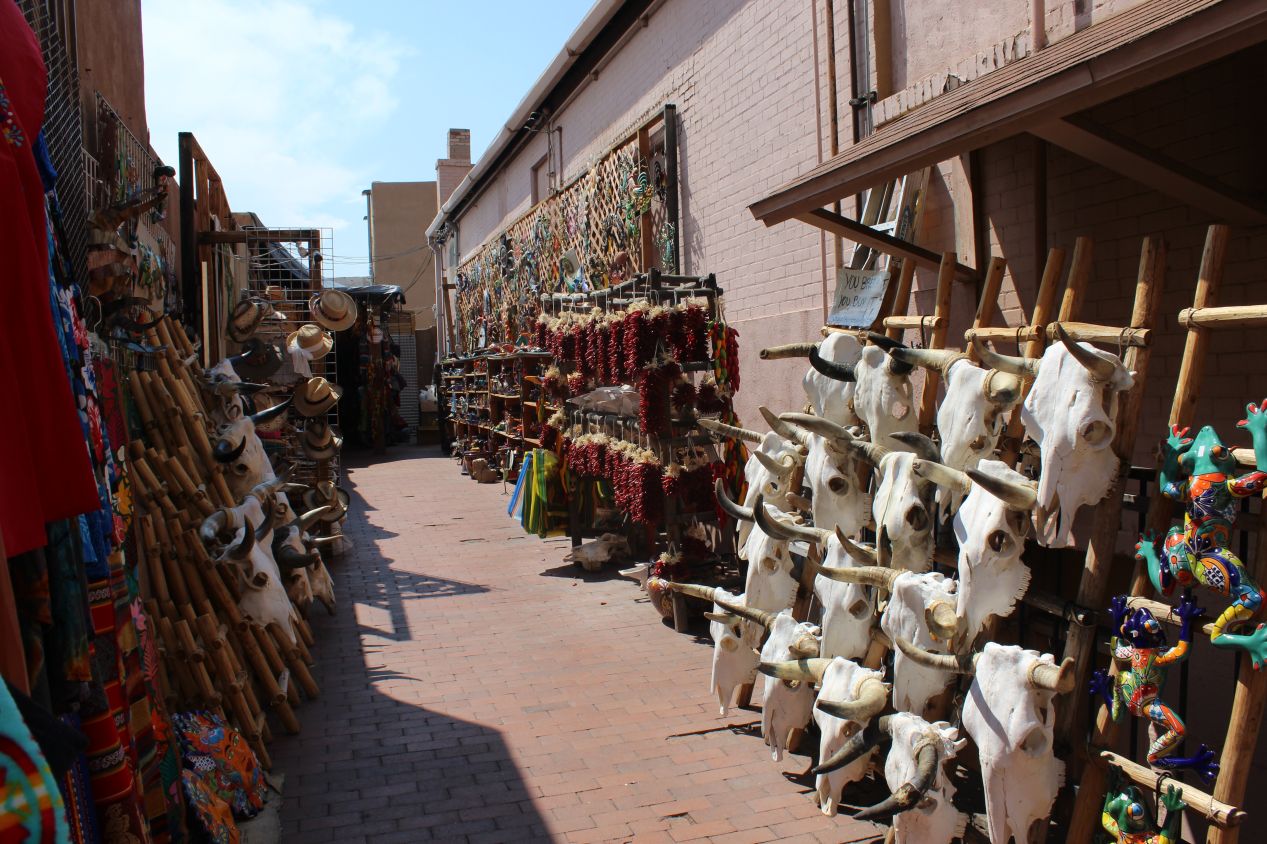


I'll conclude with a few more pictures of the crowds enjoying this Sunday afternoon in downtown Santa Fe. There were dozens of vendors with their wares on display at the ongoing Hispanic Market, and plenty of opportunities both to examine artisanal crafts as well as chow down on Southwestern food. By this point the clock was pushing 5:00 PM and that meant the tourist attractions were shutting down for the day. Since I had a very early start coming up the next day, I was content to get some dinner and call it a night.
Taos and Santa Fe are both communities steeped in their past history. For those who enjoy learning about New Mexico's long historical background, these are fantastic places to visit and experience some of the local culture. I would be continuing my New Mexico trip the next day with one of the most exciting opportunities of the whole vacation: a morning sunrise trip in a hot air balloon. I couldn't wait to see what that would be like.



